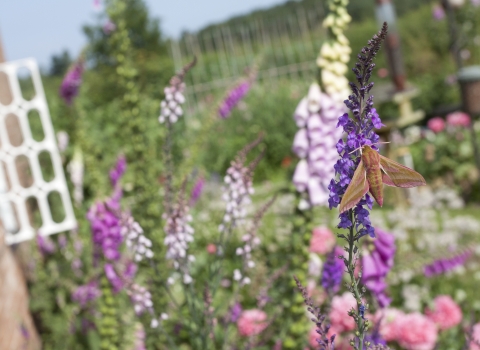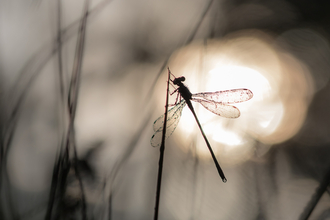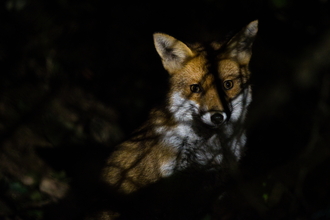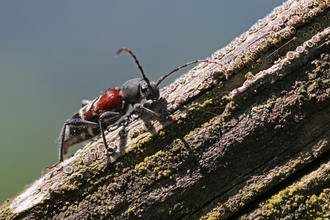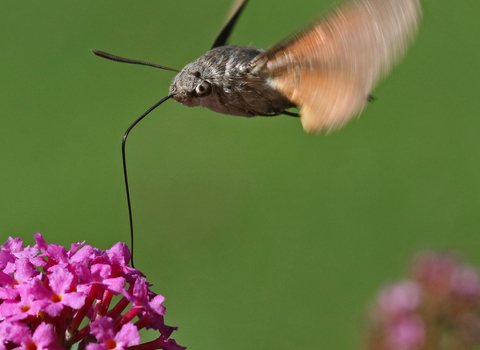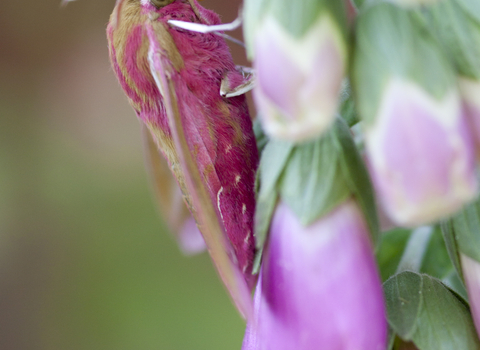How can you not be curious about a lettuce shark, hoary footman or oblique carpet?
Moths. Dull, right? Well, moths named dingy shears, clouded drab and just ‘grey’ certainly don’t help the case! However, names such as peach blossom, gold spangle and ruby tiger evoke the colour that can be found in the moth world. Place a poplar hawk-moth onto someone’s hand and see their eyes light up with glee and awe.
For the romantics there are names to captivate us such as the heart and dart, maiden’s blush, true-lover’s knot and satin lutestring.
With over 2500 species in the UK, though, where do you start with identifying them? Frustration (read 'challenge') can be a common feeling when trying to identify moths and this is sensed when you discover there are species named confused and uncertain! Our Reserves Officer, Eleanor Reast, helps us to get started...
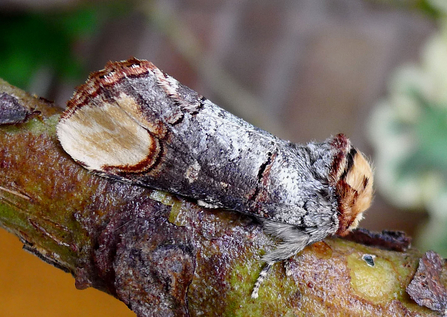
Buff-tip moth by Gail Hampshire
Buff-tip Phalera bucephala
An easy one to identify....once you’ve found it! These mimic the broken twig of a birch tree on which, along with oak and hazel, they feed on. Eggs are laid in groups of 30 to 40 and they hatch en-masse. The caterpillars are gregarious so can be seen stripping the undersides of leaves in large groups.
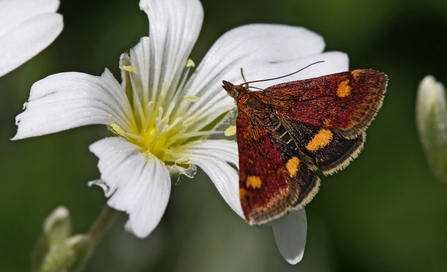
Mint moth by Wendy Carter
Mint moth Pyrausta aurata
This micro moth is one of the easier ones to identify because of its striking golden markings contrasting with a rich purple forewing. They fly in the day but I've also caught them in my moth trap (they’re released once they’ve been identified). They are becoming increasingly common in gardens and, as the name suggests, can be found feeding on mint as well as thyme and marjoram.

Hummingbird hawk-moth by Wendy Carter
Hummingbird hawk-moth Macroglossum stellatarum
So named because it resembles a tiny hummingbird as it hovers and darts between flowers during the day. Even the wingbeats are audible, beating at 80 times per second, making them barely visible. Its long proboscis enables it to nectar on tubular flowers such as honeysuckle, lilac and red valerian. This species flies over from the continent but is now thought to be overwintering in the south of the country. We're looking for your help in plotting sightings of these beautiful moths in Worcestershire - take a photo and let us know via our wildlife sightings form.
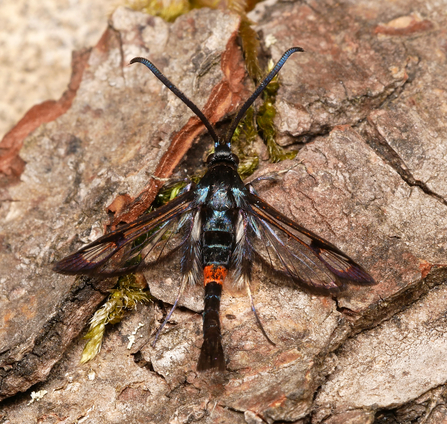
Red-belted clearwing by Oliver Wadsworth
Red-belted clearwing Synanthedon myopaeformis
Found in the vicinity of older apple trees, this is one of 14 UK clearwing species, all of which have delicate see-through wings that remind me of intricate stained glass windows. Active by day, they avoid predation by using their banded yellow or red warning colours to mimic wasps. The use of pheromone lures, synthetic versions of the scent released by the female to attract the male, has shown them to be more widespread than previously thought.
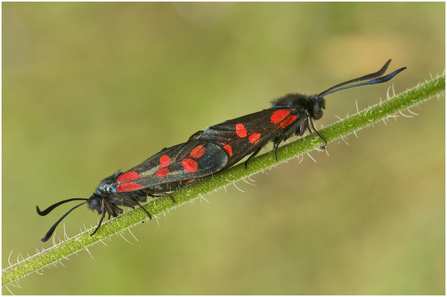
Six-spot burnet moths by Barry Green
Six-spot burnet Zygaena filipendulae
These are commonly seen in flower-rich grasslands and along wildflower-rich roadside verges from late June through to August. The red spots on the metallic wing act as a clear warning to predators - these moths are able to produce cyanide. This enables them to fly, undisturbed, during the day. Look for the males patrolling for unmated females amongst the thistle and knapweed.
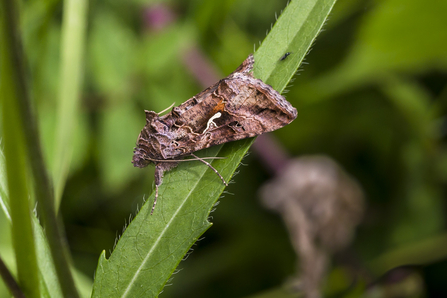
Silver y by Kevin Williams
Silver y Autographa gamma
This day-flying moth has a characteristic metallic 'y' marked on their wings. They can be seen in large numbers from May onwards, having migrated from north Africa and southern Europe. They happily come to light, especially if your garden has a good stock of its larval foodplants, nettles and legumes.
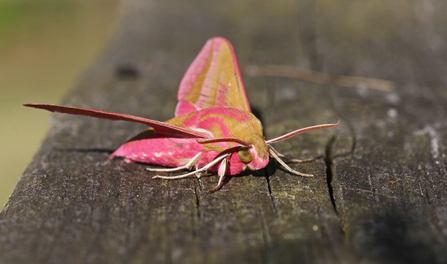
Elephant hawk-moth by Wendy Carter
Elephant hawk-moth Deilephila elpenor
This has got to be one of our glammest moths with its shocking pink body and bright white legs. When in defence-mode the caterpillar, which has false eyes emblazoned on its head, changes shape to resemble the head of an elephant. The caterpillars favour rosebay willowherb (also check your garden fuschia) and is one of only a few that are able to swim. The adult can be seen nectaring on honeysuckle at dusk and often comes to light.

White plume by Bob Knight
White plume Pterophorus pentadactyla
The delicate feathering of the deeply divided wings give this micro moth an ethereal quality. It flies from dusk onwards, seeming almost ghostly in appearance, but is easily disturbed during the day. Look for these common moths in gardens, grasslands and local greenspaces as the larvae munch on bindweed.

Angle shades by Amy Lewis
Angle shades Phlogophora meticulosa
A favourite of mine because when it's at rest its distinctive patterning reminds me of an exotic tribal mask. The olive green and pink v-markings make it beautifully camouflaged amongst fallen leaves. I've often seen it amongst red valerian in my garden during the day.

